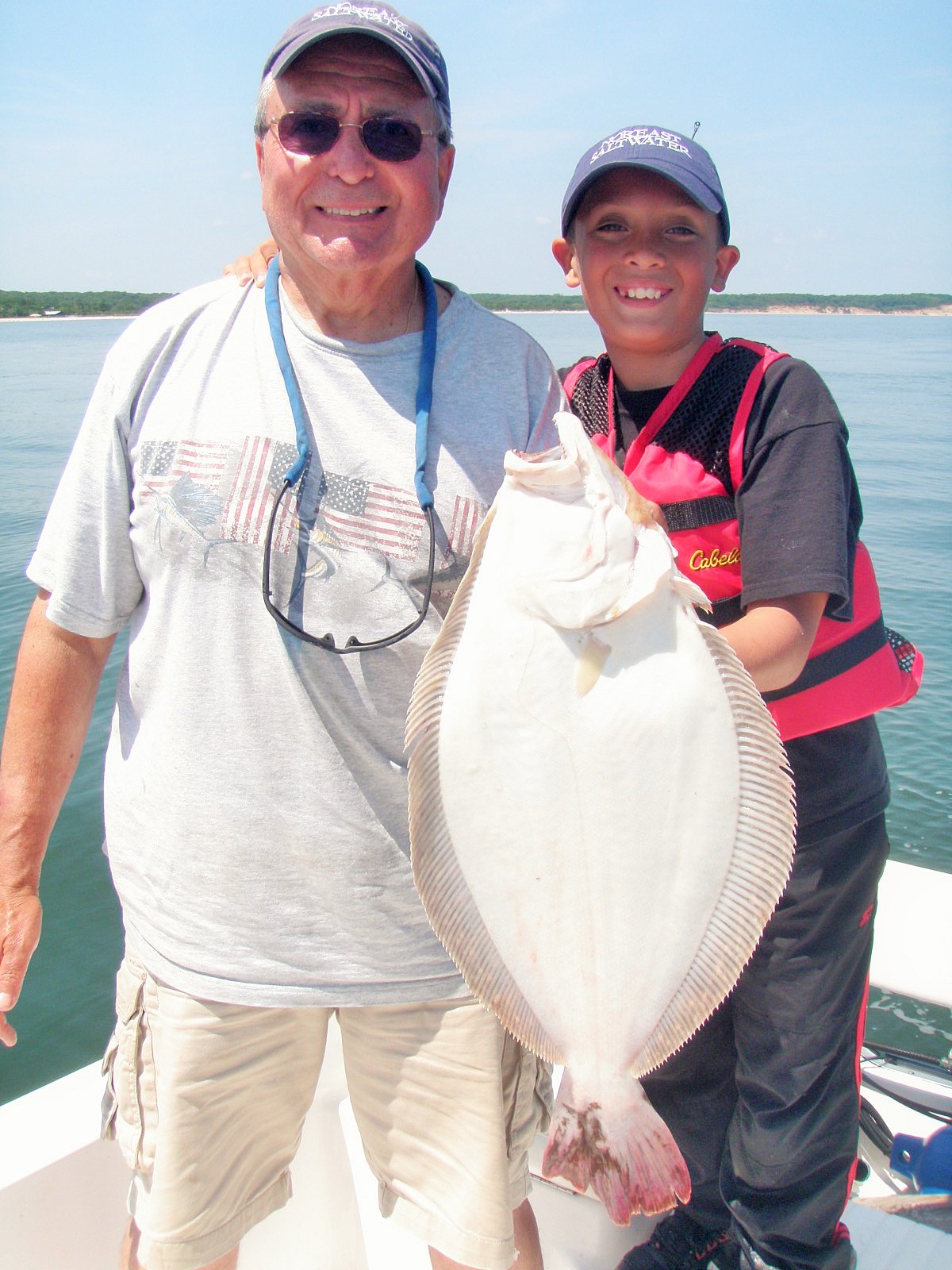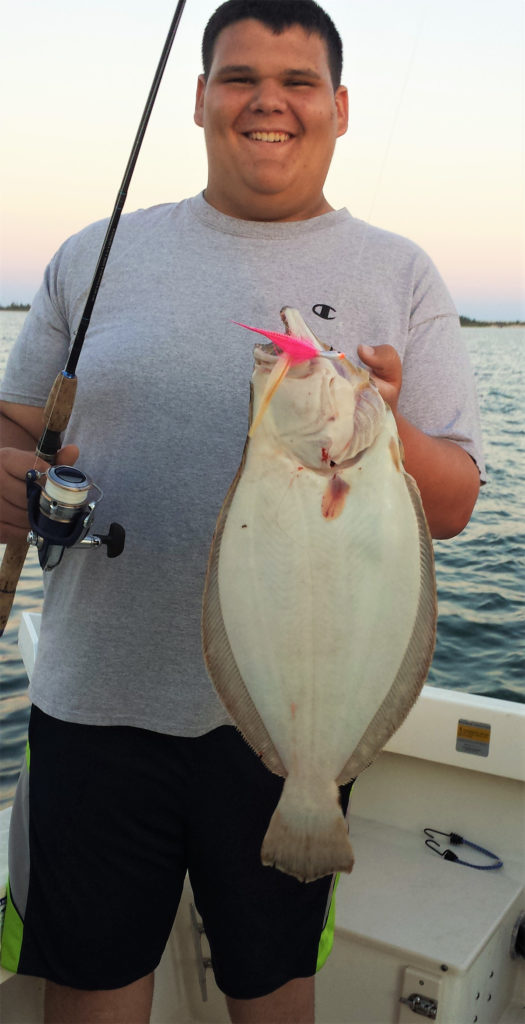
It occurs every year around this time. An invasion of fluke settle along the beaches of the North Shore of Long Island where they feast on massive schools of spawning sand eels seeking refuge among the flats and shoals. While launch ramps on both sides of Long Island Sound attract boaters looking to cash in on the bounty of fluke each spring, the fishing grounds can become quite congested once news of a hot bite circulates.
There are ample launch sites in Connecticut available to anglers with trailerable boats, which place them within short range of the hot spring fluke grounds located around Mattituck Inlet. Roughly due south of Clinton, the waters of the Sound flush in and out of this area with each passing tide, bringing with it bait-filled water to hungry fluke.
Watch the Weather
Although Long Island Sound can be as flat as a lake, it can also become quite lumpy, and a tight chop can make for wet and uncomfortable motoring and drifting. Therefore be sure to check NOAA weather reports for sea conditions and wind velocity. Keep in mind that winds from both the north and east produce tight chops against hard moving currents, whereas a southwest breeze should make for calmer seas.
A good eye and a good navigational chart bring opportunities to savvy anglers to spots that they can truly call their own. Charts may be paramount for plotting courses, but these days fancy electronics have shaved off much of the mathematics involved in plotting. Call me old fashioned but I still prefer to break out the paper charts to “read” the water. There’s a lot of ground out there, and a chart pin points potential fishing spots in detail. Look for deep-water drop-offs that empty from shoals, as well as shallow edges and ridges that feed to or from a shoal. Both are excellent locations for finding fluke.
Land of the Giants
Mattituck Inlet and its surroundings have a long reputation for producing outsize fluke. Many teen size fluke were plucked from the rocky lairs of the infamous Horton’s Point over the years. And while Horton Point Lighthouse located 6.7 miles east of Mattituck Inlet is still seen as monster fluke turf, the quantity of double digit fluke has plunged over the years. Nonetheless, more than a handful of doormats to 14 pounds do find their way to the scales for those who are at the right place at the right time. Since Hortons is made up mainly of rocky bottom and strong tidal currents, the area is better suited for trophy hunting rather than quantity.
If quantity and fast action is the goal, try the waters roughly 6 miles west of Mattituck Inlet near buoy 5, better known as Roanoke Shoals, where most of the meat and potatoes congregate through June. Roanoke Shoals habitat consists of shallow, sandy and rocky bottom extending northward from the North Shore’s coastline. At times the fluke may be just outside Mattituck Inlet. Most days however, a 6-mile steam west to Roanoke Shoal (buoy 5) produces fluke through June. Drifting and jigging along the shoal produces well during mid-tide, however as the current eases, focus your efforts on the edges of the shoal since many of the bigger fluke feed heavily where you slide off the shoal and into the 45-foot depth. At peak tide, the bite can be fast and furious. Much of the fluke here range from shorts to 5 pounds, and there are always a few that stretch out to 8 pounds over the course of the season. While both tides produce here as long as there is a drift, the outgoing sparks the most action. Winds from the west with an ebb tide make for ideal drifting conditions as long as the wind is below 15 knots. Winds from the east with an incoming tide also make for a good drift, but watch the weather closely as winds from the north and east can kick up the Sound rather quickly.
If quality over quantity is the preference, a 6-mile run east of the inlet puts you at Hortons Point. Here the bottom consists of plenty of rocks, mussel beds and some big boulders. The action here is not nearly as fast paced as buoy 5, however fluke to 14 pounds usually make news here each spring. Outgoing tide normally produces the best action, however the current moves considerably faster here, and history shows that the 40-foot depth has produced many of the monsters.
Talking Tackle
As for tackle, jigging bucktails is the way to go, and you will have to bump up to 6 or 8 ounces to hold bottom at times. Fluke balls tipped with Gulp! work as well and cost considerably less should your jig succumb to the rocky bottom. Be sure to bring plenty of backup in case you land over a sticky spot. Keep the rod tip bouncing, the drag relatively loose and smooth, with a steady retrieve and you’ll consistently bring fluke to the net. Bait casting outfits are truly ideal for jigging up big fluke, with quality spinning combos a close second. Mono or braid is a matter of preference as both do the job well. However with braid, you’ll want to tie a 6-foot length of 10- to 12-pound fluorocarbon via an Albright Knot and tie your jigs with the old reliable and still popular Improved Clinch Knot.
The combo that I’ve been using the last couple years is a 7-foot medium action KastKing graphite spinning rod matched to an Ecooda ERS2500 filled with 10-pound KastKing Super Power Braid line. These lightweight rods are specially designed for jigging with their solid taper at the tip, which makes for better feel and control of a bouncing jig.

Gulp Those Tails
While sand eels make up their main diet during the spring run, fluke feed on many different types of bait including crustaceans, mollusks and a large array of baitfish. With such a broad diet, fluke are susceptible to a wide variety of artificial lures and baits. Bucktails, soft body plastics and jigs are a few of the more popular choices. When it comes to soft baits, it’s pretty hard not include Berkley Gulp! baits. Not only are they fluke killers, weakfish, stripers and bluefish all have a fondness for them as well, especially the 5-inch Jerk Shads and the 4-inch Swimming Mullets. When threaded onto a 1/2- to 1-ounce plain jighead and bounced along the bottom, they can be deadly. Last season we gave the Spro Squid Tails a try with absolutely phenomenal results. The Spro Squid Tail is designed to mimic squid. The lifelike action of the soft plastic squid tail really did a job on the fluke when jigged right along the bottom. A 4-inch Gulp! Swimming Mullet in white, pink or chartreuse, impaled on the Squid Tails were consistent producers.
Spro Squid Tails come in several different weights (1/2 to 3 ounce) and several colors. We found the 1/2- and 3/4-ounce white, glow and pink equally effective. The Squid Tails also feature a custom designed Gamakatsu 3x strong hook. The jig’s unique shape and placement of the eyelet make these center balanced jigs unique in the way they bounce along the bottom. Add in the bulging eyes, holographic finish and blazing colors, and you have the perfect elements to keep the rods bending with fluke.





